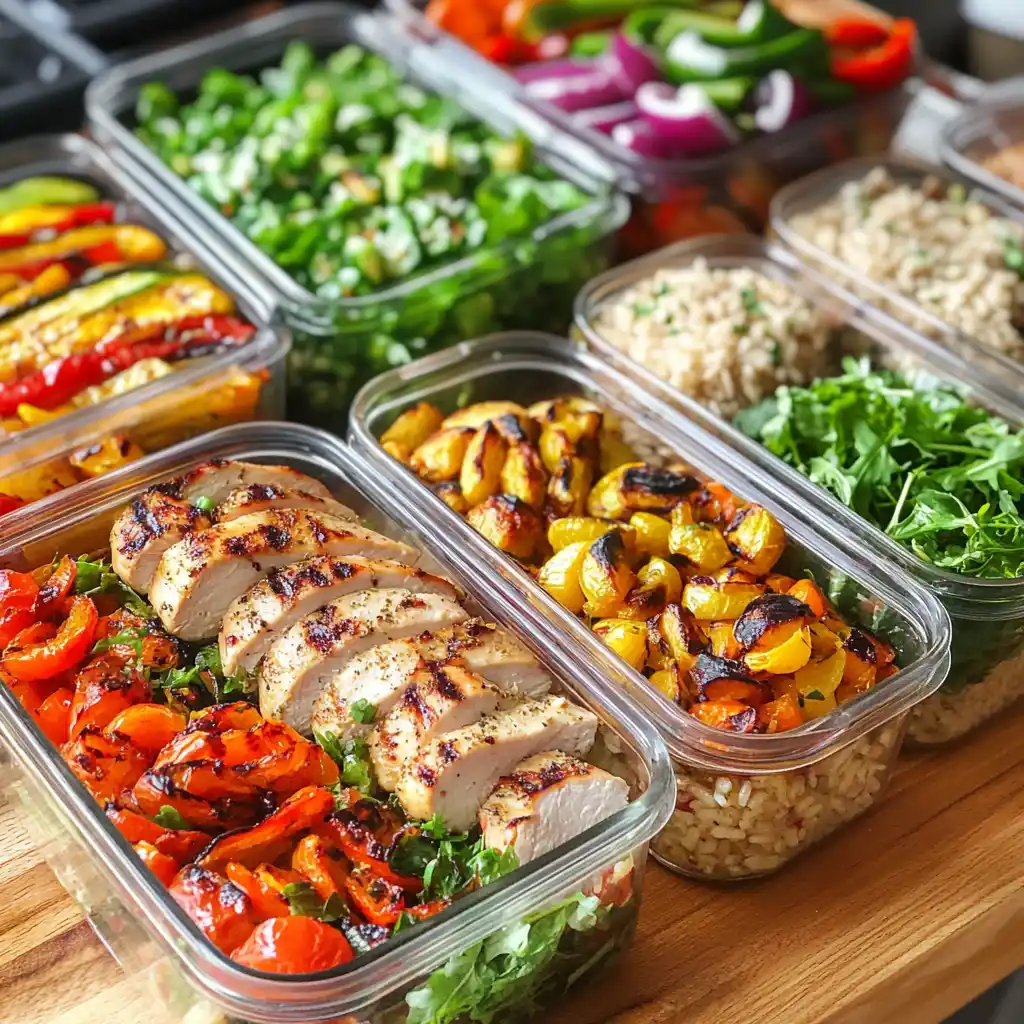Healthy meal prep isn’t just about saving time or counting macros. For me, it’s about creating meals that feel good — both for your body and your spirit. My journey with food began in a small sunlit kitchen in a coastal town, where the scent of rosemary often floated through the air and cooking wasn’t just a chore — it was a ritual.
I grew up watching the women in my family pour love into every dish. My mother used to say, “A warm meal can say what words sometimes cannot.” That sentiment shaped the way I see food today. From rolling dough with my aunt on a wobbly stool to experimenting with spices in my own kitchen, every recipe I create has a story behind it.
So when I talk about healthy meal prep, I’m not just offering tips to make your week easier (though you’ll get plenty of those too). I’m sharing a way of living — one that balances nutrition, flavor, and a deep sense of care. Whether you’re prepping meals for your busy workweek, your family, or just for yourself, I want these ideas to inspire more than just convenience. I want them to feel like home.
👉 Looking for inspiration? Try this stuffed peppers without rice recipe — a comforting, low-carb prep option with a flavorful twist.
In the sections ahead, we’ll explore how to master the art of healthy meal prep, from choosing ingredients and planning your week, to prepping balanced meals, discovering storage hacks, and even debunking popular myths. You’ll also get real answers to some of the most common questions, like “Is meal prepping healthy?” and “What are 7 healthy dinners I can start with?”
Table of Contents
The Foundations of Healthy Meal Prep
Understanding the Benefits of Healthy Meal Prep
When you prep your meals in advance, you’re not just saving time — you’re setting yourself up for success. Prepping meals helps reduce last-minute food choices, which often lead to unhealthy decisions. It also reduces food waste, saves money, and provides structure for your week.
Meal prep also allows you to be more intentional about the nutrients you’re putting into your body. Instead of scrambling to find something quick, you’re choosing ingredients that support your goals — whether that’s weight management, boosting energy, or simply feeling good after you eat.
Check out this green tea drink recipe for a healthy boost to pair with your morning prep!
Is Meal Prep Actually Healthy? Let’s Set the Record Straight
Many people wonder if prepping all your food ahead of time affects nutrition. The answer? It depends on how you do it.
Healthy meal prep focuses on balance. You want to combine lean proteins, healthy fats, fiber-rich carbohydrates, and colorful vegetables. When done right, meal prep can help stabilize blood sugar levels, improve digestion, and support overall wellness.
To ensure your meals stay nutritious:
- Avoid overcooking vegetables, which can reduce vitamins.
- Rotate proteins to ensure variety.
- Use healthy fats like olive oil, avocado, or nuts.
- Keep sauces and dressings on the side to maintain texture and flavor.
Discover great ideas like this grilled mahi mahi guide — a great lean protein choice for weekly prep.
Print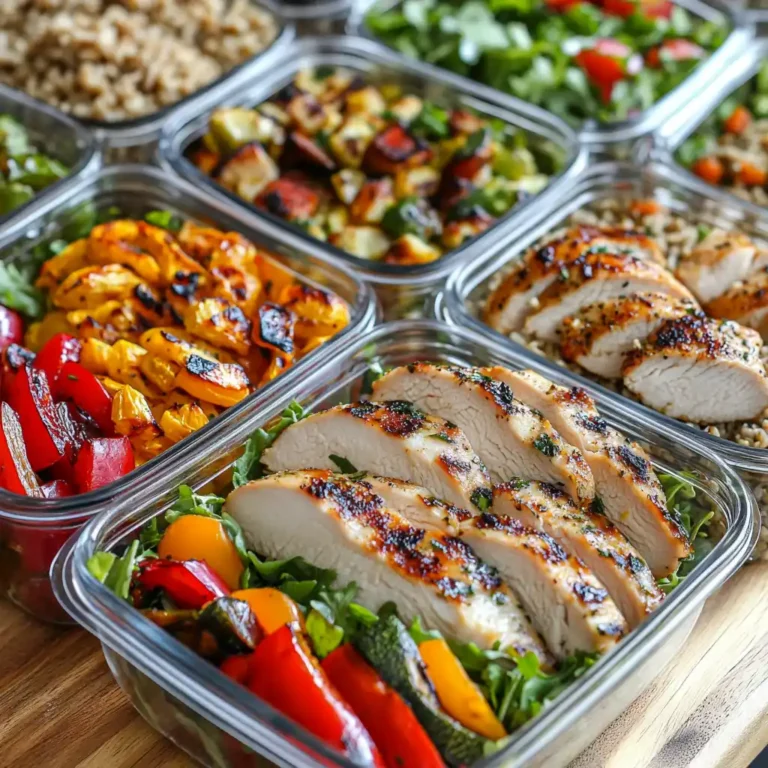
Healthy Meal Prep — Simple Ideas to Nourish Your Body
Master the art of healthy meal prep with this ultimate guide. From planning and prepping to storing and reheating, discover how to create balanced meals that support your lifestyle — without sacrificing flavor, variety, or joy.
- Total Time: 1 hour 30 minutes
- Yield: 5 days of meals
Ingredients
- Chicken breast or grilled tofu
- Quinoa, brown rice, or sweet potatoes
- Broccoli, bell peppers, zucchini, spinach
- Olive oil, tahini, or avocado
- Fresh herbs and spices (rosemary, cumin, garlic)
- Greek yogurt, boiled eggs, hummus for snacks
Instructions
- Choose 2 proteins, 2 complex carbs, and 3–4 veggies to mix and match through the week.
- Batch cook proteins and grains: grill chicken, roast tofu, cook quinoa or rice.
- Roast vegetables on a sheet pan with olive oil and seasoning.
- Store meals in airtight containers: keep proteins, carbs, and veggies separate or combine in balanced portions.
- Label containers with prep dates and refrigerate or freeze as needed.
- Reheat meals with a splash of water or broth to preserve moisture and flavor.
Notes
Keep sauces and dressings in separate jars to maintain freshness. Prep for 3–5 days at a time. Use fresh or frozen produce, and adjust portions to your lifestyle (weight loss, maintenance, active living).
- Prep Time: 1 hour
- Cook Time: 30 minutes
- Category: Meal Prep
- Method: Batch Cooking
- Cuisine: Healthy
Planning a Week of Healthy Meals
How to Structure a Healthy Weekly Meal Plan
When it comes to healthy meal prep, planning is everything. Think of it as designing a blueprint for your week — one that saves you time and stress while helping you stay on track with your nutrition goals.
Here’s how to structure your week effectively:
- Pick your meals first: Choose 2–3 breakfasts, 3–4 lunch/dinner recipes, and 1–2 snacks to rotate throughout the week.
- Check your calendar: Note any days where you’ll eat out or have less time to cook.
- Plan for variety: Aim to include at least one plant-based dish, one seafood option, one poultry meal, and one veggie-heavy recipe.
- Balance each meal: Every meal should include a protein, fiber-rich carb, healthy fat, and veggie component.
Don’t miss our egg white omelette guide — a perfect high-protein breakfast option for prepping ahead.
Choosing Ingredients That Keep You Full and Fueled
Healthy meal prep starts at the grocery store. Focus on whole, nutrient-dense ingredients that will hold up well throughout the week.
Here are some pantry and fridge staples to consider:
| Proteins | Carbs | Fats | Veggies |
|---|---|---|---|
| Chicken breast | Quinoa | Olive oil | Broccoli |
| Tofu | Sweet potatoes | Avocados | Spinach |
| Canned tuna | Brown rice | Nuts/seeds | Bell peppers |
| Eggs | Whole wheat pasta | Tahini | Zucchini |
Don’t forget herbs and spices like turmeric, cumin, garlic powder, and rosemary — they elevate flavor without adding calories.
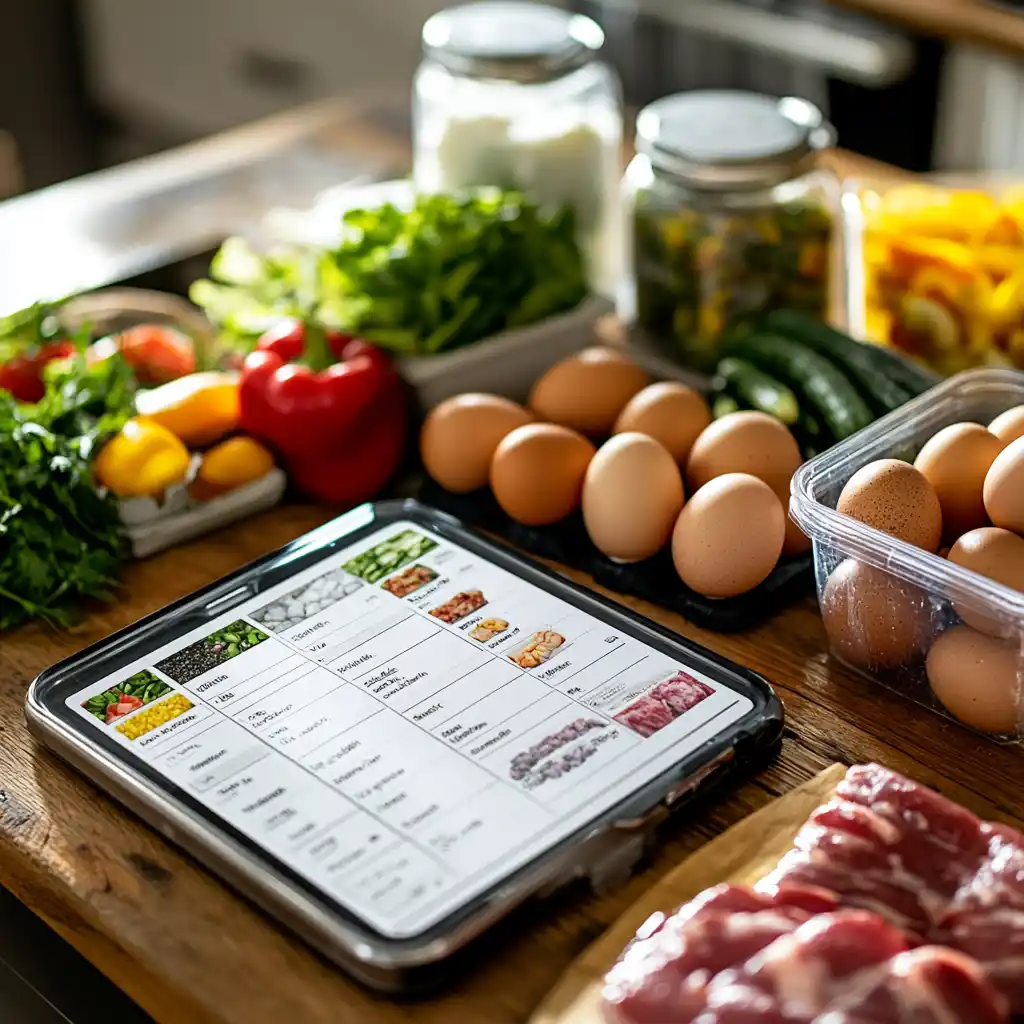
Looking for a creamy and comforting low-carb side? Don’t miss our creamy mashed cauliflower — perfect for pairing with grilled proteins or hearty stews.
Smart Grocery Shopping for Meal Prep
Building a Healthy Meal Prep Grocery List
A well-thought-out grocery list is the cornerstone of successful healthy meal prep. It saves time in the store, reduces impulse buys, and ensures you’re stocked with the right ingredients all week long.
Break your list into categories for better organization:
Protein Sources
- Chicken breast, ground turkey, eggs
- Tofu, tempeh, canned beans
- Salmon, shrimp, canned tuna
Vegetables (Fresh & Frozen)
- Spinach, kale, bell peppers
- Zucchini, carrots, broccoli
- Mixed frozen stir-fry blends
Complex Carbs
- Sweet potatoes, brown rice, quinoa
- Whole wheat pasta, oats
Healthy Fats
- Olive oil, avocados, nuts, seeds
- Nut butter, tahini
Flavor Builders
- Fresh herbs (basil, cilantro, rosemary)
- Garlic, ginger, lemon, limes
- Vinegars (balsamic, apple cider), spices
Don’t forget reusable containers, snack-size bags, and labels for efficient storage!
Tips for Budget-Friendly Shopping Without Sacrificing Nutrition
Eating healthy doesn’t mean emptying your wallet. Here’s how to shop smart:
- Buy in bulk: Grains, beans, and oats are cheaper when bought in larger quantities.
- Stick to seasonal produce: It’s fresher, cheaper, and more flavorful.
- Use frozen veggies: They’re picked at peak ripeness and often just as nutritious.
- Plan for leftovers: Choose meals that can serve double-duty (e.g., grilled chicken for salads, wraps, or bowls).
Check out this flavorful high-protein egg salad sandwich — affordable, quick to prepare, and perfect for lunch prep.
Essential Tools and Containers for Healthy Meal Prep
What You Need to Succeed with Healthy Meal Prep
To make healthy meal prep easy, efficient, and stress-free, you’ll need the right tools in your kitchen. These aren’t fancy gadgets — just reliable items that help you prep faster and store smarter. Whether you’re prepping for the whole week or just a few days, having the right setup makes all the difference.
Here are the top tools every healthy meal prepper should own:
- Sharp chef’s knife & sturdy cutting board – These are must-haves for slicing veggies, trimming proteins, and chopping fresh herbs with ease.
- Non-stick skillet & baking sheets – Essential for batch-cooking proteins and roasting vegetables without tons of oil.
- High-speed blender or food processor – Great for prepping smoothies, sauces, soups, and even energy snacks in minutes.
- Measuring spoons and cups – Helps with portion control and consistency in your meals.
- Stackable mixing bowls – Make multitasking a breeze when preparing several components at once.
Want to take your healthy meal prep up a notch? Add a slow cooker or air fryer to your routine. These time-saving appliances make it easy to create nourishing dishes with minimal effort — ideal for busy weeknights.
The Best Storage Containers for Healthy Meal Prep
You’ve done the cooking, now don’t let poor storage ruin your work. Choosing the right containers is crucial in healthy meal prep. Good containers keep meals fresh, portioned, and easy to grab when hunger strikes.
Here’s what to stock in your kitchen:
| Container Type | Best Use | Why It’s Great |
|---|---|---|
| Glass containers with lids | Full meals | Microwave-safe, odor-resistant, eco-friendly |
| Mason jars | Overnight oats, layered salads | Airtight, space-saving, visually appealing |
| Silicone storage bags | Sliced fruit, snacks, sauces | Reusable, flexible, and freezer-friendly |
| Bento-style boxes | Balanced lunches | Keeps ingredients separated and fresh |
Pro tip: label your containers with the prep date, and keep sauces in separate mini jars to maintain texture and taste. This simple hack will level up your healthy meal prep instantly.
Looking for a high-protein recipe that’s made for storage? Don’t miss our grilled mahi mahi guide — it’s lean, flavorful, and holds up beautifully in containers all week long.
Healthy meal prep isn’t just about what you cook — it’s about how you store it, reheat it, and make it work for your life. The right tools and containers turn your kitchen into a prep-friendly zone and make sticking to your goals so much easier.
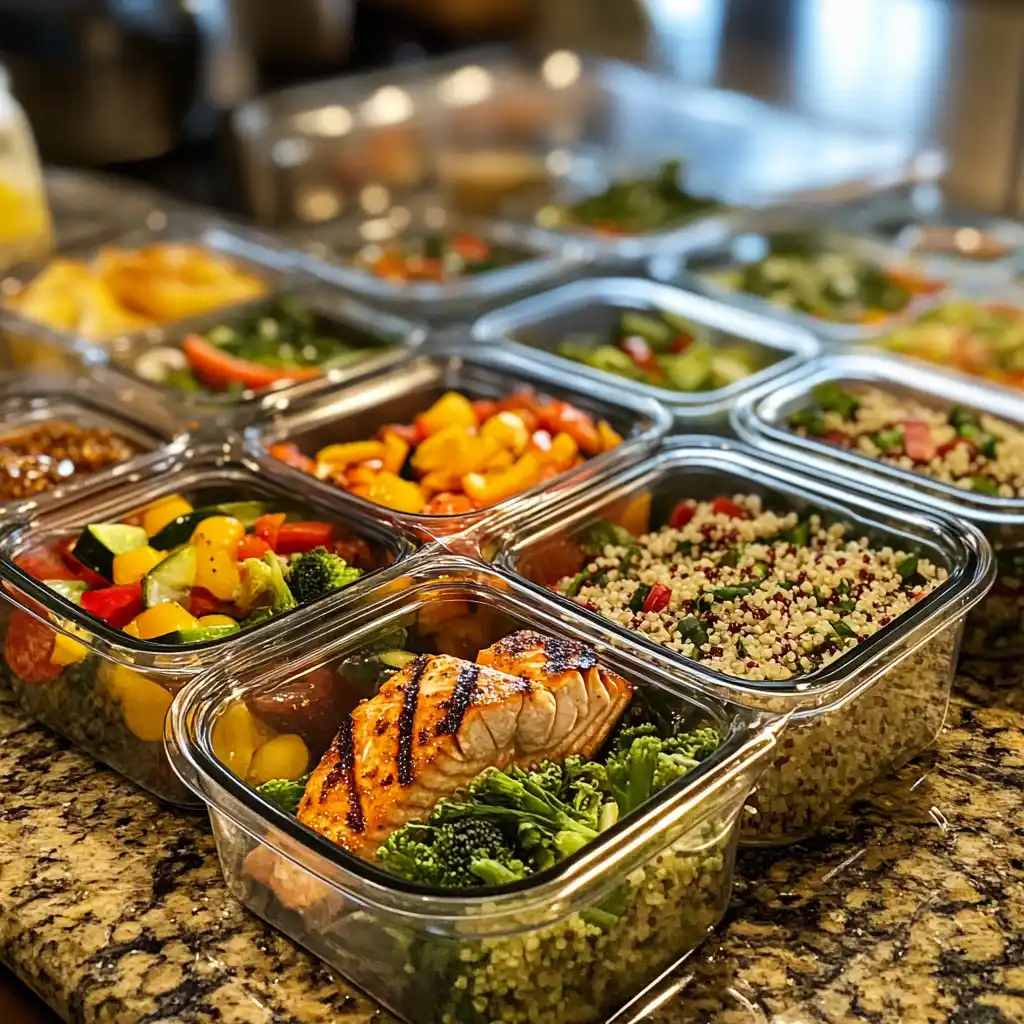
Prepping and Cooking Techniques That Work Every Time
Batch Cooking for Efficient Healthy Meal Prep
One of the most effective ways to simplify your healthy meal prep routine is through batch cooking. This technique involves preparing large quantities of food at once, then portioning it out for the days ahead. It cuts down on daily cooking and ensures your meals are ready when you need them.
Start by selecting versatile ingredients that work across multiple dishes. Here’s how to make batch cooking work for your schedule:
- Pick 2 proteins: Grill chicken and bake tofu — you can use them in salads, wraps, bowls, or pasta.
- Roast a tray of veggies: Think bell peppers, broccoli, zucchini, or sweet potatoes. They reheat well and add bulk and color.
- Cook your carbs in advance: Quinoa, brown rice, or roasted potatoes make excellent bases.
- Make one sauce or dressing: A homemade vinaigrette or tahini drizzle can elevate any meal.
Rotate ingredients through the week to avoid boredom — use grilled chicken in a power bowl on Monday, and wrap it in a low-carb tortilla on Wednesday.
Cooking Methods That Preserve Nutrition and Flavor
Your cooking technique has a big impact on the taste and nutrition of your meals. For healthy meal prep, aim for methods that maintain food quality and require little added fat.
Here are the most meal-prep-friendly cooking styles:
- Roasting: Ideal for veggies and lean proteins. Enhances natural sweetness and crispness.
- Steaming: Great for preserving vitamins in delicate vegetables like spinach or green beans.
- Grilling: Adds smoky flavor with minimal oil — perfect for meats, tofu, or portobello mushrooms.
- Sautéing with olive oil: Quick and flavorful for stir-fries and side dishes.
- Boiling/Simmering: Great for grains and soups. Just don’t overdo it with high-heat boiling, which can deplete nutrients.
Try pairing your next batch-cooked protein with this veggie-packed stuffed peppers without rice — it’s hearty, satisfying, and low in carbs.
If you’re new to meal prep, start small. Cook two dishes, double the portions, and enjoy the benefits. As you get comfortable, you’ll find that healthy meal prep becomes second nature.
Storing and Reheating Your Prepped Meals the Right Way
Smart Storage Strategies for Fresh and Safe Healthy Meal Prep
So you’ve prepped your meals — now what? If you don’t store them properly, all that effort can go to waste. One of the most overlooked elements of healthy meal prep is how you handle food storage. Doing it right keeps your meals fresh, safe, and tasty all week long.
Here’s how to make it work:
- Cool before sealing: Always let hot food cool to room temp before refrigerating to avoid condensation that causes sogginess or spoilage.
- Use airtight containers: These preserve freshness, prevent spills, and avoid fridge odors from mixing with your food.
- Label everything: Add prep dates with a marker or sticky label so you know when it’s time to eat or toss.
- Stack smart: Store ready-to-eat meals at eye level and snacks near the front for easy access.
Storage tip: Keep veggies and proteins separate if you plan to mix and match through the week — it helps preserve texture and flavor.
Reheating Tips That Preserve Texture and Taste
Reheating can make or break your healthy meal prep. Do it wrong, and you’ll be left with dry chicken, soggy greens, or rubbery rice. Here’s how to bring your meals back to life:
- Microwave with moisture: Add a splash of water or cover with a damp paper towel to keep food from drying out.
- Use a toaster oven: Great for reheating roasted veggies and proteins while keeping them crisp.
- Stovetop refresh: Sauté prepped items in a non-stick skillet with a dash of broth or oil to revive flavor.
- Avoid overcooking: Reheat just enough to warm through — overdoing it can ruin texture and kill nutrients.
Want a great example of a dish that stores and reheats beautifully? Don’t miss our creamy mashed cauliflower — it pairs with almost anything and keeps its smooth texture all week.
Healthy meals deserve to taste just as good on day three as they did on day one. With the right storage and reheating methods, your healthy meal prep will always be something to look forward to.
Sample Healthy Meal Prep Plans for Every Lifestyle
Beginner-Friendly Healthy Meal Prep Plan (5 Days)
If you’re just starting with healthy meal prep, don’t overwhelm yourself with complicated recipes or prepping all seven days at once. A 5-day plan is perfect for beginners — simple, balanced, and flexible.
Here’s a sample breakdown:
Breakfast (same all week for ease):
- Overnight oats with chia seeds, almond milk, cinnamon, and berries (use mason jars)
Lunch (2 alternating options):
- Grilled chicken with quinoa and steamed broccoli
- Lentil salad with cherry tomatoes, cucumber, olive oil, and feta
Dinner (3 meals rotated):
- Shrimp stir-fry with brown rice and veggies
- Turkey meatballs with marinara and zucchini noodles
- Baked salmon with sweet potato and green beans
Snacks:
- Boiled eggs, Greek yogurt, baby carrots with hummus, almonds
This plan keeps grocery shopping simple and lets you reuse ingredients to reduce waste.
Try this delicious high-protein egg salad sandwich as a quick-prep lunch swap or post-workout snack — easy to make ahead and packed with flavor.
Customized Meal Prep Plans Based on Lifestyle
Healthy eating isn’t one-size-fits-all. Whether you’re an athlete, a busy parent, or working a desk job, healthy meal prep can adapt to your lifestyle.
Here are three tailored approaches:
For Weight Loss
- Focus on lean proteins (chicken, tofu), lots of vegetables, and whole grains.
- Portion meals ahead using divided containers to avoid overeating.
- Skip heavy sauces; opt for herbs, vinegar, and spices for flavor.
For Busy Professionals
- Stick to 20-minute recipes and one-pan meals.
- Prep full meals in containers that are microwave-safe and transportable.
- Include snacks to avoid vending machine trips.
For Active Lifestyles/Athletes
- Boost protein intake with eggs, legumes, lean meats, or plant-based shakes.
- Include complex carbs like quinoa, oats, and sweet potatoes.
- Prep high-protein snacks like boiled eggs, protein balls, and cottage cheese.
Don’t miss our green tea drink recipe for a healthy boost — a perfect addition for morning hydration or post-workout recovery.
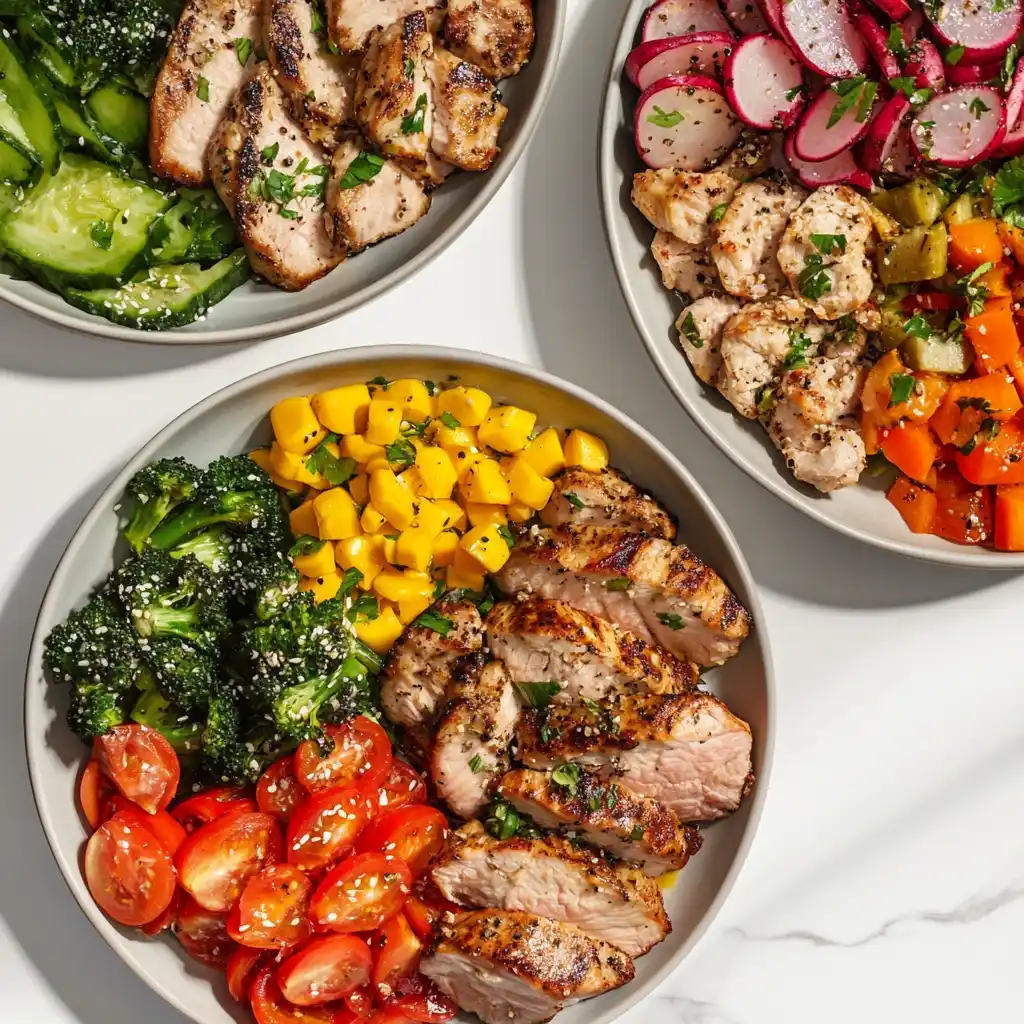
With the right plan in place, healthy meal prep becomes second nature — saving time, money, and mental energy all week long.
Debunking Common Meal Prep Myths
Myth #1: Healthy Meal Prep Is Boring and Bland
One of the biggest misconceptions about healthy meal prep is that it’s repetitive or lacks flavor. The truth? With a few seasoning tricks, smart swaps, and fresh ingredients, your meals can be as exciting as a restaurant dish — just cleaner and better for you.
Here’s how to avoid boredom:
- Use herbs and spices to keep things vibrant — try cumin, paprika, turmeric, rosemary, or lemon zest.
- Rotate sauces and dressings: a tahini-lime drizzle one day, a garlic yogurt sauce the next.
- Switch up cooking methods — roast, sauté, or grill to vary textures and taste.
Healthy doesn’t mean tasteless — it just means smarter ingredients and intentional prep. Looking for inspiration? Try our zesty stuffed peppers without rice — bold, hearty, and far from boring.
Myth #2: Meal Prepping for 5 Days Isn’t Safe
Another common concern is whether meals can stay fresh over five days. If stored properly, the answer is yes — healthy meal prep for up to 5 days is perfectly safe and effective.
Follow these safety rules:
- Store meals in airtight containers.
- Refrigerate foods within 2 hours of cooking.
- Consume seafood within 2–3 days, but other proteins and grains can last 4–5 days.
- Use labels with prep dates to stay on track.
Pro tip: Consider freezing some meals if you’re prepping for a full week. This keeps food fresh and flavorful while extending shelf life.
Myth #3: Meal Prep Takes Too Long
Healthy meal prep doesn’t have to eat up your entire Sunday. In fact, once you find your rhythm, you can get a full week of meals done in under 90 minutes.
Speed it up with these hacks:
- Use pre-chopped veggies or frozen blends to skip peeling and slicing.
- Cook multiple ingredients on one sheet pan (hello, sheet pan dinners).
- Stick to simple recipes with overlapping ingredients.
Looking for a fast, no-fuss side dish? Don’t miss our creamy mashed cauliflower — quick to make, ultra-satisfying, and freezer-friendly too.
When you prep smart, you reclaim time and energy throughout your week — and that’s what makes healthy meal prep such a life-changing habit.
FAQs and Final Thoughts on Healthy Meal Prep
Is Meal Prepping Actually Healthy?
Control ingredients and portion sizes
Avoid ultra-processed convenience foods
Stay consistent with your health goals
The key is balance: use whole foods, lean proteins, healthy fats, and fiber-rich carbs. Avoid prepping meals that are too low in calories or overly restrictive — your body needs fuel.
Is Meal Prep for 5 Days Healthy?
To keep meals fresh:
Store in the back of the fridge where it’s coldest
Avoid reheating more than once
Freeze portions if you won’t eat them within the window
Which Meal Prep Service Is Healthiest?
Prioritize organic, non-processed ingredients
Offer nutritional transparency
Provide customization based on dietary needs (gluten-free, keto, vegan, etc.)
That said, prepping your own meals allows more flexibility, quality control, and affordability.
What Are 7 Healthy Dinners I Can Start With?
Grilled salmon with roasted sweet potatoes & green beans
Turkey and veggie stir-fry with brown rice
Lentil curry with steamed broccoli
Chicken fajita bowls with cauliflower rice
Shrimp and quinoa with roasted peppers
Zucchini noodles with marinara and lean turkey meatballs
Stuffed bell peppers with beans, corn, and avocado
👉 Discover great ideas like our egg white omelette guide — it doubles as a quick dinner or high-protein breakfast.
Conclusion: Making Healthy Meal Prep a Lifestyle, Not a Chore
Healthy meal prep is more than just a trend — it’s a lifestyle upgrade. It saves time, supports your health, and reduces stress around food decisions. But more than that, it connects you to your meals. It makes food intentional again.
Whether you’re prepping for the first time or fine-tuning your process, the goal is the same: nourish yourself in a way that feels sustainable and satisfying.
When your fridge is stocked with meals you’re excited to eat, the benefits are immediate — more energy, better focus, and less temptation to order takeout.
Don’t miss our green tea drink recipe for a healthy boost — a refreshing add-on to your next meal prep routine.

